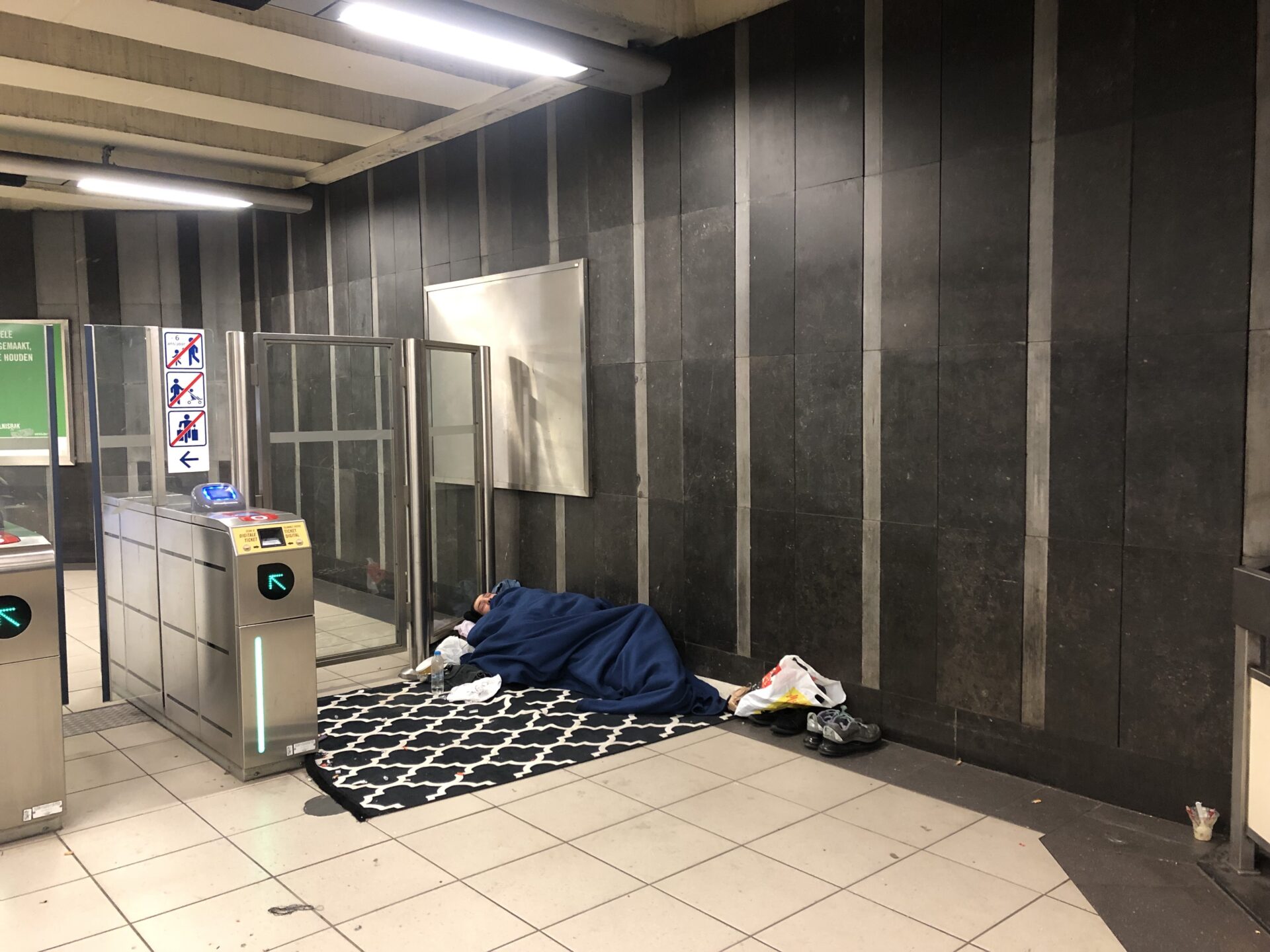As the city struggles to systematically improve the situation, a sharp increase in homelessness and drug use in Brussels has resulted in many vulnerable people gathering in the stations of public transport operator STIB. In some stations, the presence is more strongly felt than in others.
Brussels has in recent years experienced increased homelessness and drug use. At the heart of the issue are a series of overlapping social crises ranging from precariousness rising due to the Covid-19 pandemic and the ongoing reception crisis for asylum seekers which pushed more vulnerable people onto the street due to the government's failure to provide them with the shelter they are entitled to.
While civil society organisations are working tirelessly to assist these people, and the region is working to tackle homelessness, the issues persist, and the impact is particularly visible in the city’s Metro stations. Open drug taking has often been witnessed by commuters, which has led some to feel insecure – even if drug users usually keep to themselves in most cases.

Homeless man in Comte de Flandre metro station. Credit: The Brussels Times
It has also resulted in more people getting stuck in station roller shutters, which can lead to serious injuries and even death, and a rise in people walking on the tracks illegally.
Brussels Mobility Minister Elke Van den Brandt was questioned about the situation in several STIB stations during the Mobility Committee of the Brussels Parliament on Tuesday. The meeting focused on current and future operations in Metro stations.
'Serious situation'
Van den Brandt noted there are around ten to 12 stations in the region where the presence of drug addicts and homeless people is a particularly big problem, based on the analysis of STIB's patrolling teams. "The situation is serious," she said, according to reports by Sudinfo.
"In 2023, more than 11,000 incidents were recorded by the Security dispatchers, including around 7,000 due to the presence of homeless people and 4,000 due to the presence of drug addicts." In addition, STIB received 969 complaints from commuters about "the presence of homeless people and drug addicts", a 66% increase compared to 2022.
STIB's teams highlighted that the stations Yser, Brussels-Midi, Ribaucourt, Porte de Namur, Botanique, Bourse, Anneessens, Hôtel des Monnaies, Trône and Parc are most often affected by the phenomena. But this list evolves according to what is observed week by week.
She added that there are patrols in place seven days a week, concentrating on the most problematic areas of the STIB network. However, their powers to intervene are limited and often rely on calling in the police.
Related News
- There will be five or six 'drug hotspots' in the Brussels-Midi police area
- French President Macron announces 'unprecedented operation' against drug trafficking in Marseille
The Brussels-Capital Region Government confirmed it would grant STIB extra funds to further increase safety in Metro stations. Using these funds, an extra 20 security guards are in the process of being hired and a new STIB team will be set up to assess and direct drug addicts and homeless people towards the most suitable reception, care and accommodation centre for their specific needs.
The company is also involved in the SubLink project, bringing together several associations to take action in problem areas from a social and security approach. Van den Brandt noted that the project has shown good results in recent months. In the Merode metro station in Etterbeek, STIB opened designated areas for homeless and drug-dependent people.
Finally, STIB is also setting up its mobile emergency teams in the second half of 2024, which are expected to be fully operational in September.

